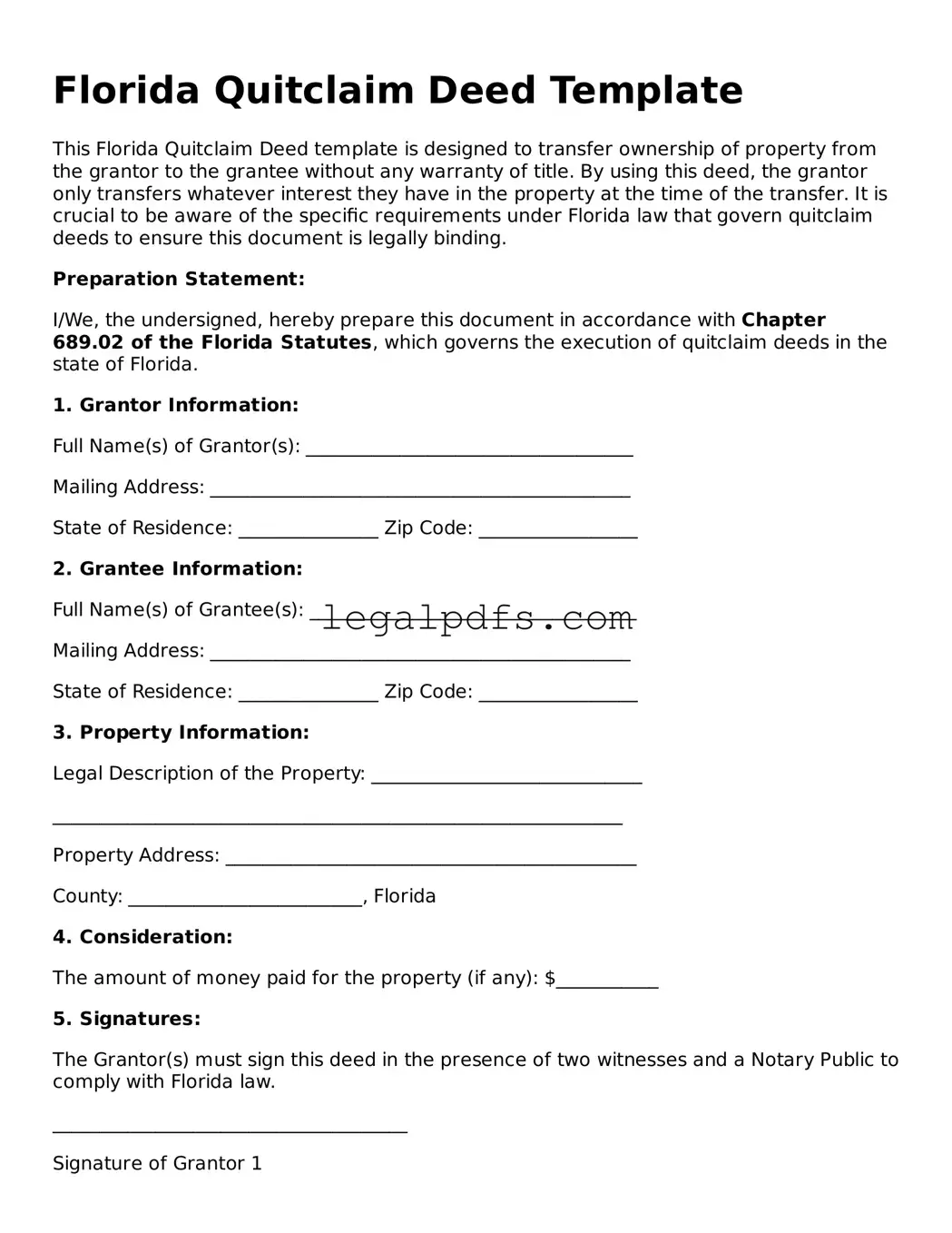Florida Quitclaim Deed Template
This Florida Quitclaim Deed template is designed to transfer ownership of property from the grantor to the grantee without any warranty of title. By using this deed, the grantor only transfers whatever interest they have in the property at the time of the transfer. It is crucial to be aware of the specific requirements under Florida law that govern quitclaim deeds to ensure this document is legally binding.
Preparation Statement:
I/We, the undersigned, hereby prepare this document in accordance with Chapter 689.02 of the Florida Statutes, which governs the execution of quitclaim deeds in the state of Florida.
1. Grantor Information:
Full Name(s) of Grantor(s): ___________________________________
Mailing Address: _____________________________________________
State of Residence: _______________ Zip Code: _________________
2. Grantee Information:
Full Name(s) of Grantee(s): ___________________________________
Mailing Address: _____________________________________________
State of Residence: _______________ Zip Code: _________________
3. Property Information:
Legal Description of the Property: _____________________________
_____________________________________________________________
Property Address: ____________________________________________
County: _________________________, Florida
4. Consideration:
The amount of money paid for the property (if any): $___________
5. Signatures:
The Grantor(s) must sign this deed in the presence of two witnesses and a Notary Public to comply with Florida law.
______________________________________
Signature of Grantor 1
______________________________________
Signature of Grantor 2 (if applicable)
Witnesses:
- ______________________________________
- Signature of Witness 1
- ______________________________________
- Signature of Witness 2
State of Florida County of _______________
On this ___ day of ____________, 20__, before me, the undersigned notary public, personally appeared the above named grantor(s), who acknowledged signing the foregoing Quitclaim Deed, and who are personally known to me or have produced __________________ as identification.
______________________________________
Notary Public
My Commission Expires: _______________
Instructions for Filing:
Once completed and signed, this document must be recorded with the County Recorder or Clerk's Office in the county where the property is located.
